James McAvoy Split
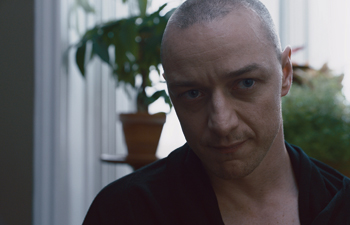
James McAvoy Split
Cast: Anya Taylor-Joy, James McAvoy, Haley Lu Richardson
Director: M. Night Shyamalan
Genre: Horror, Thriller
Running Time: 117 minutes
Synopsis: Writer/director/producer M. Night Shyamalan returns to the captivating grip of The Sixth Sense, Unbreakable and Signs with Split, an original film that delves into the mysterious recesses of one man's fractured, gifted mind. Following last year's breakout hit The Visit, Shyamalan reunites with producer Jason Blum (The Purge and Insidious series, The Gift) for the thriller being hailed as 'Shyamalan's most terrifying film to date."
Though Kevin (James Mcavoy, X-Men series, Wanted) has evidenced 23 personalities"each with unique physical attributes"to his trusted psychiatrist, Dr. Fletcher (Tony Award winner Betty Buckley, The Happening, TV's Oz), there remains one still submerged who is set to materialize and dominate all the others.
Compelled to abduct three teenage girls led by the willful, observant Casey (Anya Taylor-Joy, The Witch), Kevin reaches a war for survival among all of those contained within him"as well as everyone around him"as the walls between his compartments shatter apart.
Split
Release Date: January 23rd, 2017
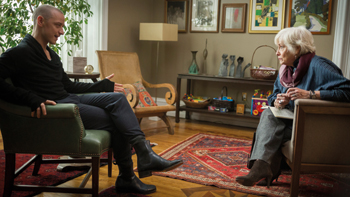 About The Production
About The Production
The Root of Terror: Split Begins
Moviegoers were first introduced to the mysterious and intricate universe of M. Night Shyamalan in 1999 with the worldwide phenomenon The Sixth Sense, which was followed by such blockbusters as Unbreakable and Signs.
The filmmaker began a new chapter in 2015 with his terrifying The Visit, which grossed almost $100 million worldwide. Following the same model as that movie's production"and to allow for complete creative freedom" M. Night Shyamalan made the decision to return to his independent roots by self-financing Split.
'I want to make something new with every single film by doing something that nobody's ever done," M. Night Shyamalan says. 'That's exciting for me, and it's also dangerous and problematic, especially when selling it to the world."
After the global success of The Visit, M. Night Shyamalan again teamed up with Jason Blum and his Blumhouse Productions for Split.
Jason Blum, known for his industry innovation in helping to shepherd small-budget films into worldwide blockbusters, discusses the partnership: 'M. Night Shyamalan can tell these extraordinarily character-driven stories against a backdrop of a larger subject matter. Split isn't a typical small-budget film; it's a large vision on a limited budget. It is not CGI or hundreds of millions of dollars that makes Split feel so epic"it's M. Night Shyamalan's incredibly provocative story."
With a more intimate setup, M. Night Shyamalan was able to primarily focus his energies on the story and character development by eliminating some of the noise and variables that come with a larger film. 'It's easy to knock me out of my comfort zone, which is a reason why I make smaller movies," M. Night Shyamalan says. 'That way I can turn down certain factors so I can hear that creative voice telling me if something we're doing is off track."
M. Night Shyamalan pitched the idea for Split over dinner with Ashwin Rajan, his longtime collaborator and president of production for M. Night Shyamalan's Blinding Edge Pictures. 'I was immediately blown away. I thought it was the perfect film for M. Night Shyamalan; it's a convergence of all the types of stories he tells," Ashwin Rajan says. 'He scribbled some ideas and a couple of scenes on a piece of paper, and they were all just riveting."
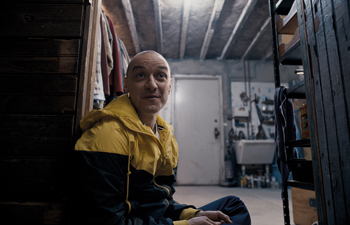 Jason Blum immediately responded to the drama and complexities of M. Night Shyamalan's new offering, and how the film didn't follow typical thriller conventions. 'Audiences will enjoy Split on both a visceral -popcorn' level, and at the same time, it will force them to reflect on human nature, which is the real underlying theme and preoccupation of M. Night Shyamalan's career."
Jason Blum immediately responded to the drama and complexities of M. Night Shyamalan's new offering, and how the film didn't follow typical thriller conventions. 'Audiences will enjoy Split on both a visceral -popcorn' level, and at the same time, it will force them to reflect on human nature, which is the real underlying theme and preoccupation of M. Night Shyamalan's career." M. Night Shyamalan's filmmaking style also goes beyond a single genre. 'Each film is uniquely his own," says executive producer Steven Schneider. 'He weaves together folktales, legends and other narratives, and blends them with his background and experience. All of his films cover complex themes and characters, and I was amazed by the depth of Split."
Steven Schneider believes audiences will not only be entertained by Split, but they will be challenged by it. 'My hopes are as ambitious as M. Night Shyamalan's that the film's strength in storytelling will spark debate about the complexities of human identity," he says.
Whether it was looking into clairvoyance for The Sixth Sense, superhuman strength for Unbreakable or sundowning for The Visit, Shyamalan starts his stories with ideas inspired by phenomena in the natural world. But that is simply a beginning point: M. Night Shyamalan then takes his characters' journeys to an extraordinary realm, letting narrative arcs arise from the struggles of the characters themselves.
As a storyteller, M. Night Shyamalan pairs comprehensive research with pure imagination. His films in the suspense and supernatural genres lead him to draw from the mysterious and fascinating, using those premises as building blocks for his imagination and ask, simply, 'What if?"
M. Night Shyamalan explains: 'I'm taking something you believe and pushing it into the fantastic realm. I wondered what would happen if, in Dissociative Identity Disorder, each individual personality believes they are who they are, 100 percent. If one personality believes they have diabetes or high cholesterol, can their body chemically change to that belief system? And what if one personality believed it had supernatural powers? What would that look like?"
During his time at NYU, M. Night Shyamalan took courses in which the subject of Dissociative Identity Disorder (DID) was discussed, and over the years, the filmmaker has remained fascinated by theories surrounding the diagnosis.
When M. Night Shyamalan started to craft the Split screenplay, he read a great deal about the most documented cases"and these stories of those involved made a huge impact on his imagination. To inform his supernatural tale, M. Night Shyamalan spoke with psychiatrists in the field and gained practical knowledge about how therapists would conduct themselves in sessions with patients in this population. That inquisitiveness fleshed out the characters who became Kevin and Dr. Fletcher.
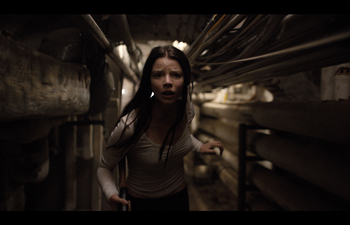 'This film is a convergence of skillsets and storytelling that M. Night Shyamalan brings to this medium, and there's an incredible ride at the center," says Ashwin Rajan. 'The performances are stunning, and I think that will resonate with audiences."
'This film is a convergence of skillsets and storytelling that M. Night Shyamalan brings to this medium, and there's an incredible ride at the center," says Ashwin Rajan. 'The performances are stunning, and I think that will resonate with audiences." As a specific and precise director hailing from the school of Hitchcock, M. Night Shyamalan labors over every scene. 'M. Night Shyamalan's a perfectionist, and he obsessively storyboards each shot to make sure he's following his original vision," producer Marc Bienstock says. 'He wants every shot, every moment to be the very best, and that's inspiring."
Like everything M. Night Shyamalan does, the look of Split is also incredibly specific. 'It's a dark film but visually stunning with a beautiful color palette and use of shadows," says Jason Blum. 'M. Night Shyamalan has an unparalleled talent for creating dread and fear in the seemingly mundane and commonplace, which makes the film quietly threatening instead of overt or in your face."
Getting Into Characters: Nine Rolls in One
M. Night Shyamalan felt there were only a handful of actors who could play the demanding role of a man with 23 personalities in Split. It was paramount for the writer/director that Kevin's personalities not be viewed as caricatures but as fleshed out personas that audiences would embrace with sympathy. To that end, M. Night Shyamalan sought out James McAvoy"a dynamic actor who handles blockbuster roles and small, intimate parts with equal aplomb"to play the lead character's many roles.
M. Night Shyamalan saw James McAvoy as absolutely up for the challenge. 'This is the most complex character I've ever written. I was thinking, -Does he understand what I'm asking him to do in this piece?' And he did; I've never worked with an actor so fearless."
M. Night Shyamalan intentionally sent the actor the script with little context, hoping to draw from his performer ideas about Kevin he could never have imagined. The filmmaker recalls: 'James McAvoy asked, -What's the name of the character I'm playing so I know, just so I don't get confused." And I said, -I can't tell you, just read the script.'"
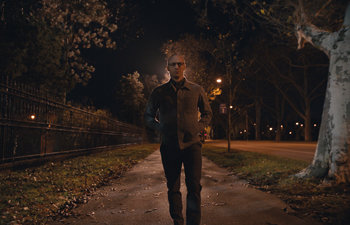 James McAvoy was immediately intrigued with the story's many twists and turns. 'I read the first 10 pages and thought, -Wow, what is this?' Then I read the next 10 pages and thought, -What is that?'" he says. 'It felt like I was being continually confronted with something completely different. That's the joy of what Night does so well. He keeps an audience on their toes trying to figure out what the film is: Are we watching a thriller, a psychological drama, horror, sci-fi or something supernatural? And this film is all of those genres."
James McAvoy was immediately intrigued with the story's many twists and turns. 'I read the first 10 pages and thought, -Wow, what is this?' Then I read the next 10 pages and thought, -What is that?'" he says. 'It felt like I was being continually confronted with something completely different. That's the joy of what Night does so well. He keeps an audience on their toes trying to figure out what the film is: Are we watching a thriller, a psychological drama, horror, sci-fi or something supernatural? And this film is all of those genres." M. Night Shyamalan's commitment to creating and funding his project was an inspiration for James McAvoy. 'He's brave and bold for bucking the trend that says, in order to tell a good story, you must spend $200 million," he says. 'Instead, he's clearing away all the interference so he can tell a really quality story. It's a privilege to work with a director who has that attitude and approach when it comes to storytelling.
M. Night Shyamalan and James McAvoy worked closely to ensure the actor's performance remained incredibly singular as he transformed into each role with authenticity.
'M. Night Shyamalan's demanding and almost forensic in what he wants you to do," James McAvoy says. 'He has a very specific idea of what he wants in his mind, yet he's extremely collaborative and giving."
Changing colors and characters"sometimes within the same shot"was particularly demanding. 'You hope the audience will buy you as one character," James McAvoy explains. 'Then you need them to buy you as this next persona and make that transition interesting without alienating viewers."
Still, the role presented the seasoned stage and screen actor with an extraordinary opportunity. 'To be honest, I quite enjoy playing each character, because as an actor you rarely get the chance at this type of performance," he says. 'It's quite exciting to radically change what you're thinking, who you are and what makes you in a moment."
The duo worked diligently to ensure each personality had a distinct voice and presence. 'James McAvoy is Scottish, but most of his career he has performed with an American or British accent," says M. Night Shyamalan. 'I rifled through his encyclopedia of accents, and would throw out an idea like, -How about Hedwig has a lisp?' And James McAvoy was just brilliant at adapting."
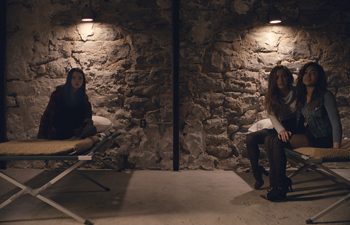 When embodying young Hedwig, James McAvoy walked a fine line between playing a child versus a simplistic version of an adult. 'That's how most people play a child," says M. Night Shyamalan. 'Hedwig's very smart"he just happens to be 10 years old. I would tell James McAvoy, -You're not playing a dumb adult; that's not what we're doing. Use your eyes; you're very smart. But you're 10, so you don't know what that gesture means.'"
When embodying young Hedwig, James McAvoy walked a fine line between playing a child versus a simplistic version of an adult. 'That's how most people play a child," says M. Night Shyamalan. 'Hedwig's very smart"he just happens to be 10 years old. I would tell James McAvoy, -You're not playing a dumb adult; that's not what we're doing. Use your eyes; you're very smart. But you're 10, so you don't know what that gesture means.'" James McAvoy and M. Night Shyamalan continued to delve into the flavors and motives of each of the alters. 'James McAvoy would ask why a character responded a certain way, and since I was so close to the story, I was able to walk him through my logic," offers M. Night Shyamalan. 'It was essential to discuss each character until this persona was real for both of us."
While M. Night Shyamalan strictly sticks to his script, he encourages actors to add their own color between the lines. 'One of the ways to achieve this authenticity is by ad-libbing, and that comes out, in a way," he says. 'But I treat the script like a play"that's always how I refer to it"and I don't alter lines."
For M. Night Shyamalan, there are millions of ways to perform a scene without altering words. 'I want actors to realise they're much more pliable than they think they are," he says.
James McAvoy performed between the lines with incredible artistry and expertise. 'He said the exact words in the script but ad-libbed with this face and physicality," says M. Night Shyamalan. 'James McAvoy would bring these incredible new aspects to the table. We got into that wonderful rhythm where things that were sacred to me weren't touched but only heightened."
The performer's athleticism also proved a huge asset. 'He was doing very physical feats like jumping fences and climbing," says M. Night Shyamalan. 'We would have the stunt person there just in case, but James McAvoy is so agile and his physicality was a definite strength."
Beyond performing stunts, the actor seems to shrink three inches when playing Hedwig and stiffens as strong Dennis. 'Whether he was playing a child or a severe woman, he approaches each character with great comfort in his physicality," states Shyamalan. 'He'd finish a scene and the crew would break into applause because we knew we were watching something extraordinary."
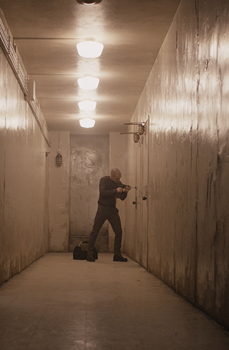 'When you think about what James McAvoy had to do in this film, it's astonishing," raves Jason Blum. 'Not only was he seemingly effortless as he switching between alters on certain shooting days, he switched between them during certain scenes. You're seeing an actor at the top of his game, and we were all awe-struck by what he managed to do as an extraordinarily disciplined actor. I've never seen anything like it, and I hope his performance receives the critical acclaim it deserves at the hands of M. Night Shyamalan's deft direction."
'When you think about what James McAvoy had to do in this film, it's astonishing," raves Jason Blum. 'Not only was he seemingly effortless as he switching between alters on certain shooting days, he switched between them during certain scenes. You're seeing an actor at the top of his game, and we were all awe-struck by what he managed to do as an extraordinarily disciplined actor. I've never seen anything like it, and I hope his performance receives the critical acclaim it deserves at the hands of M. Night Shyamalan's deft direction." Defining Personalities: Casting the Thriller
With a modest production budget and a core cast of five, M. Night Shyamalan was painstaking in his selection of performers, choosing veteran actors along with a new crop of talent.
M. Night Shyamalan explains his process: 'I prefer young, inexperienced actors because they're just perfect in their energy and light, and then hyper-trained theater actors like Betty Buckley and James McAvoy who are brilliantly extemporaneous."
The director penned the part of Dr. Fletcher with seasoned stage and screen star Betty Buckley in mind. 'M. Night Shyamalan is full of joie de vivre and mischief, and I love mischief," says Betty Buckley, who previously starred in M. Night Shyamalan's The Happening.
A singularly focused therapist, Dr. Fletcher cares deeply for those she treats and bucks convention by viewing Kevin's condition as a possible asset instead of a hindrance. 'She sees him as having remarkable potential as a human being, perhaps more than the average person," says Betty Buckley.
'Dissociative Identity Disorder is how Dr. Fletcher diagnoses Kevin, but she is more intrigued with the evolution of one of these personalities"what Kevin is becoming."
Betty Buckley researched her role including consulting with a psychologist experienced in this type of treatment. 'I wanted to make sure I was accurately responding and relating to each one of the manifestations of the various characters that James McAvoy plays," she explains. 'Her goal is to help this human find a central being where he can integrate these aspects of himself that have been fractured. Each personality behaves and thinks differently and has a different agenda. It's very complex, and my performance needed to feel authentic."
M. Night Shyamalan's laser-like knowledge of the story provided an important avenue for collaboration. 'He conceived of the script and has a clear idea of every single detail, which allows him to be very collaborative," the actress says. 'If you have an idea, he'll help you develop it more or tell you right away if it's not within the scope of what he envisioned."
Beyond the thrills of the script, Betty Buckley was drawn to the film's distinct themes of loneliness, particularly within her character. 'She's chosen a solitary life, in order to be dedicated to her work and patients, and I tried to bring that awareness and feeling into the movie," she says. 'Overall, Split felt very much like a French film in its themes and artistic style, which is an unusual combination for a film meant to scare you to death."
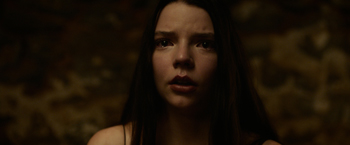 Betty Buckley also appreciates how M. Night Shyamalan taps actors with strong theater backgrounds. 'M. Night Shyamalan is smart to use actors like James McAvoy who have roots in theater," she commends. 'Artists in that arena have an understanding of storytelling and discipline, and M. Night Shyamalan brings that craft to his filmmaking."
Betty Buckley also appreciates how M. Night Shyamalan taps actors with strong theater backgrounds. 'M. Night Shyamalan is smart to use actors like James McAvoy who have roots in theater," she commends. 'Artists in that arena have an understanding of storytelling and discipline, and M. Night Shyamalan brings that craft to his filmmaking." To play the extraordinarily intelligent Casey"a survivor with a dark past of her own"filmmakers turned to Anya Taylor-Joy, one of Hollywood's up-and-coming stars. Audiences first learned of Anya Taylor-Joy's extraordinary talents following her breakout role in the 2015 horror film The Witch. . Night Shyamalan says of her performance, 'She had this amazing rawness. I felt very lucky she said yes to Split."
Before joining the cast, Anya Taylor-Joy had the opportunity to first see the script. 'Initially, they wanted me to sign on without having read it, but I pleaded to get a copy," says Anya Taylor-Joy. 'I was shocked and amazed by the story; it occupied my brain for days."
Anya Taylor-Joy quickly found a path into her character as she easily related to Casey's outsider status. 'That quality of not fitting in could be her saving grace, which is such an intriguing idea," she says, adding that she also admired Casey's resourcefulness and strength. 'She's tough because she had to survive experiences no one should go through, but that background gave her the exceptional ability to break down problems by seeing the situation as it is, not how she wants it to be."
M. Night Shyamalan's distinct directing style was an asset for Anya Taylor-Joy, especially during the supernatural thriller's most terrifying scenes in which her character went head to head with one of Kevin's alters. 'I've learned there's such a thing as generalised fear, panic or despair, and these feelings can't be generalized"they must be specific to the character," she says. 'In a scene where I'm acting overwhelmed or terrified, M. Night Shyamalan would say, -I don't know who that was, but that wasn't Casey.' And he's always right."
The writer/director also worked to make each take unique by having actors approach a scene with a different thought on their minds. 'As actors we're feeding off each other: If James does something different then I'll respond differently," says Anya Taylor-Joy. 'It was fascinating to see how the scenes played out. James McAvoy is one of the best actors of our generation and watching him up close was a master class."
Intense scenes prompted James McAvoy to become protective of the young actress. 'It would have been difficult, and perhaps psychologically affecting, to do this role with a method actor," says Anya Taylor-Joy. 'Fortunately, James McAvoy wanted me to feel as comfortable as possible, and would often joke between takes to lighten the mood."
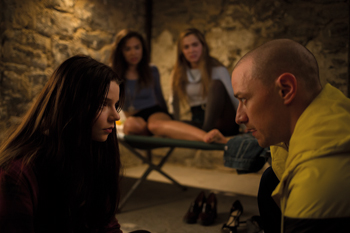 To portray the seemingly wholesome Marcia filmmakers looked to Jessica Sula (TV's Recovery Road), who shot her audition for Split with the help of a friend and an iPhone. 'It was not a quality recording," she laughs. 'I sent it in at 1 a.m., and the next day, I got a call to meet with the casting director in Los Angeles to reshoot the audition."
To portray the seemingly wholesome Marcia filmmakers looked to Jessica Sula (TV's Recovery Road), who shot her audition for Split with the help of a friend and an iPhone. 'It was not a quality recording," she laughs. 'I sent it in at 1 a.m., and the next day, I got a call to meet with the casting director in Los Angeles to reshoot the audition." After signing on to the project, Jessica Sula was blown away reading M. Night Shyamalan's quietly menacing script. 'Each page felt like a cliffhanger," she says. 'This is an extremely frightening, well-rounded thriller with substance; it is quintessential M. Night Shyamalan."
A challenge for Sula was giving Marcia depth, and she worked closely with M. Night Shyamalan to add complexity to her character, one who is trapped in a cell and scared to death. 'She's a normal teenager who comes from a good family and finds herself in a horrific situation she never could have imagined," says Jessica Sula. 'I didn't want to play her as just a shaking, scared girl. M. Night Shyamalan knows these characters inside and out, and he helped me hit all of the marks that added dimension."
The film's intensely emotional scenes took a toll on Jessica Sula and the entire cast. 'We were often very quiet and reserved and didn't speak in between certain scenes," says Jessica Sula. 'I listened to a lot of classical music, like Beethoven, because it helped me empty my brain without taking me out of a mood."
Next up, filmmakers sought out Haley Lu Richardson (The Edge of Seventeen, TV's Recovery Road) to play popular valedictorian Claire.
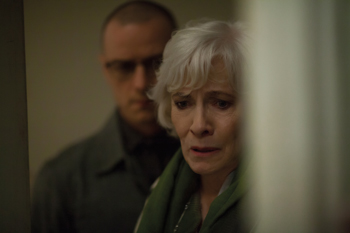 Haley Lu Richardson recalls auditioning one of the film's most intense moments without first reading the script. 'M. Night Shyamalan is pretty secretive about his projects before filming, so it was definitely a challenge to do the audition without knowing where I was or what was going on. I had to make up a world based off a single scene and blindly commit to it," she says. 'Once I finally got to read the script, I realised the film was more twisted and terrifying than I even imagined."
Haley Lu Richardson recalls auditioning one of the film's most intense moments without first reading the script. 'M. Night Shyamalan is pretty secretive about his projects before filming, so it was definitely a challenge to do the audition without knowing where I was or what was going on. I had to make up a world based off a single scene and blindly commit to it," she says. 'Once I finally got to read the script, I realised the film was more twisted and terrifying than I even imagined." Haley Lu Richardson and M. Night Shyamalan shared several conversations about her character and how to break the female stereotypes of horror films. 'In so many scary movies, the -popular blonde' dies first, and we wanted Claire to be much more complex than that," says Haley Lu Richardson. 'She's a strong leader and believes with all of her soul that the three girls can work together and survive. Casey just happens to have had different experiences in her life that lead her to disagree with Claire, but no matter who's way is right, Claire never gives up."
An Altered Look: Design of Split
M. Night Shyamalan again returns to his hometown of Philadelphia to shoot Split. 'Philadelphia is where Night makes all his movies," explains producer Marc Bienstock. 'He is incredibly passionate about that."
Production designer Mara LePere-Schloop worked alongside M. Night Shyamalan to bring Kevin's gritty reality to life. 'This is a complicated film because there are so many layers to the story and what the audience is privy to at any given moment," says Mara LePere-Schloop. 'We wanted nuances and subtleties that hinted at what was to come without giving anything away."
Mara LePere-Schloop and her team employed color to reflect Kevin's different personalities. 'These are hyper forms of people, and we had a very long discussion about using a new color for new character we were introducing into this world," she explains.
The subterranean world of the basement also had color strategically threaded throughout. 'We tried to desaturate everything else so that a pop of color was impactful," Mara LePere-Schloop explains. 'Moving through the set, the wall colors are saturated and desaturated, depending on the scene. In the space where audiences see the most intense and violent action, we employed the most vibrant use of color."
M
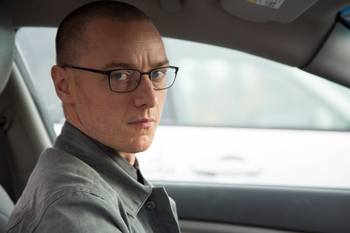 . Night Shyamalan's remarkable preparation and rigorous use of storyboards helped LePere-Schloop bring to life what was in the director's mind. 'M. Night Shyamalan has the whole movie in his head, and he's generous with his time going through key pieces," says Mara LePere-Schloop. 'I had a very thorough understanding of what was going to be expected of these worlds we were building and the exact shot he wanted."
. Night Shyamalan's remarkable preparation and rigorous use of storyboards helped LePere-Schloop bring to life what was in the director's mind. 'M. Night Shyamalan has the whole movie in his head, and he's generous with his time going through key pieces," says Mara LePere-Schloop. 'I had a very thorough understanding of what was going to be expected of these worlds we were building and the exact shot he wanted." In addition to meticulous planning, Mara LePere-Schloop often had to work quickly without compromising the film's broader scope. 'You can never make an isolated decision about anything when you're making a film this size. You must think in terms of the larger context," she says. 'We were forced to put on our thinking caps and be efficient about everything."
M. Night Shyamalan was always game to discuss ideas or questions, even down to the smallest details. 'On any given day, we might have a thousand decisions to make from wall color to the type of light bulb needed," Mara LePere-Schloop says. 'M. Night Shyamalan is able to multitask and is always eager to talk through any aspect of his vision."
Costume designer Paco Delgado also kept with a more minimal palette. 'Aesthetically, the whole idea was to produce a very stark image," he says.
To dress Casey, Paco Delgado opted for layers and oversized clothing to hide her body. 'She's a damaged person who has suffered abuse, and she doesn't care about fashion or fitting in with the other girls," he says.
Paco Delgado dressed Dr. Fletcher in a restricted palette of camels, grays and blues. 'I wanted her wardrobe to include elegant, high-end clothes but without being flashy since she's such a scholar."
The costume designer also used colors to draw distinctions between Kevin's various personalities. 'Dennis is the strongest personality, and he reminded me of a soldier keeping everything under control," he says. 'We reflected that policeman quality with a strong grey color."
Imaginative Barry wore soft colors and materials including wools, explains Paco Delgado. 'We wanted his wardrobe to embrace his creativity."
For young Hedwig, Paco Delgado drew inspiration from the boys in Philadelphia's nearby schools. 'We dressed him in a tracksuit, which was popular with kids his age, and we added a little bit more color since he's a child."
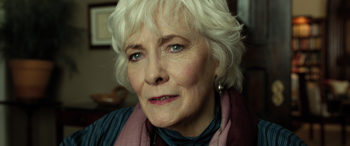 Patricia was one of the more difficult personalities to dress for the supernatural tale. 'We had discussions if James McAvoy would wear a wig and actually look like a woman," he says. 'Ultimately, we decided that Patricia needed to look like a man wearing women's clothing."
Patricia was one of the more difficult personalities to dress for the supernatural tale. 'We had discussions if James McAvoy would wear a wig and actually look like a woman," he says. 'Ultimately, we decided that Patricia needed to look like a man wearing women's clothing." One element that was consistent between each personality was James McAvoy's minimalist haircut. 'I didn't want to try to do anything with hair styles or wigs," says Shyamalan. 'His shaved head creates an empty slate where just the actor's expressions take you from one character to the next."
Split
Release Date: January 23rd, 2017
MORE
- Mission: Impossible Fallout
- Glenn Close The Wife
- Allison Chhorn Stanley's Mouth Interview
- Benicio Del Toro Sicario: Day of the Soldado
- Dame Judi Dench Tea With The Dames
- Sandra Bullock Ocean's 8
- Chris Pratt Jurassic World: Fallen Kingdom
- Claudia Sangiorgi Dalimore and Michelle Grace...
- Rachel McAdams Disobedience Interview
- Sebastián Lelio and Alessandro Nivola...
- Perri Cummings Trench Interview



